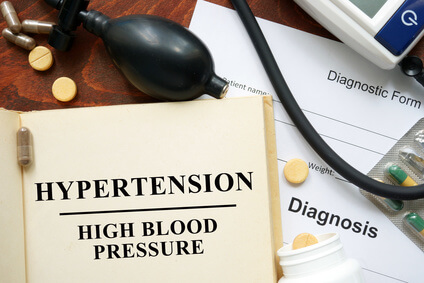Seeing as hypertension prevalence and incidence increases with age, treating elderly patients of paramount importance.

The AHA/ACC guidelines have lowered cohort hypertension thresholds to >130/80 mmHg, whereas the European guidelines have kept the classic >140/90 mmHg, though recommending lower thresholds for most patients at the same time. Lower than 130/80 mmHg is recommended with the exception of very frail patients and ≥65-year olds.
Anyway, given the J curve between values and events, this is the first time the recommended targets are 120-129 mmHg systolic blood pressure and 70-79 mmHg diastolic blood pressure.
In contrast, the AHA/ACC guidelines have issued recommendations regardless of age, which made other American societies publish guidelines dedicated to patients over 60.
Read also: Loss in Life Expectancy after Surgical Aortic Valve Replacement.
The European Heart Journal will soon publish a prospective analysis carried out by Douros et al. of the Berlin Initiative Study, where a <140/90 mmHg target was associated to an increase in all-cause mortality risk in 1628 patients of mean 81 years old.
In conclusion, <140/90 mmHg blood pressure (BP) values were associated with 26% increased risk in all-cause mortality. This increase was basically driven by patients reaching <130 mmHg systolic BP targets.
Por patients over 70, there was a trend in favor of reduced mortality with <140/90 mmHg values.
Nonetheless, the authors have documented a 40% increased risk in all cause morality for patients over 80 and a 61% increased risk for patients that also had a history of cardiovascular events.
Read also: Vena Cava Filter for All Patients After Severe Trauma.
Interestingly, the risk curve for all-cause mortality associated to systolic BP is U shaped.
Even though the AHA/ACC and ESC/ESH guidelines were published practically at the same time and were based on virtually the same evidence, they show large discrepancies. For example, the cutoff value to start medication in a 64-year old with no prior events and low risk may vary as much as 20 mmHg, depending on which of the guidelines their physician decides to follow.
Even the elderly condition might be difficult to define; a definitive cutoff value can be practical and serve as guideline, but it reflects a partial point of view since, we know, not all of us age the same way.
Data are quite limited when it comes to the elderly (>80 years), a population that, to make matters worse, is on the rise, as are very frail patients requiring home care, or senile patients, who are seldom included in controlled studies.
Read also: Clinical Implications of the New Hypertension Guidelines.
Given the physiopathological conditions of the elderly (limited baroreflex, arterial elasticity, ventricular compliance, and kidney failure) antihypertensives should be indicated with caution, and here is where the medical criterion should set the course, rather than the guidelines.
Original Title: Blood pressure targets in the elderly: many guidelines, much confusion.
Reference: Sebastian Ewen et al. European Heart Journal (2019) 0, 1–3. Article in press.
Subscribe to our weekly newsletter
Get the latest scientific articles on interventional cardiology
We are interested in your opinion. Please, leave your comments, thoughts, questions, etc., below. They will be most welcome.





